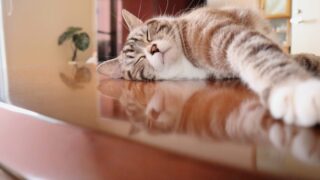Cats are curious creatures by nature, and while their exploratory behaviors can be endearing, they can also lead them into harm’s way. To ensure your home is a safe sanctuary for your feline friend, it’s crucial to identify potential hazards and take appropriate precautions. Here’s how to keep your cat safe at home.
Common Household Hazards
1. Toxic Plants: Many common houseplants are poisonous to cats, including lilies, poinsettias, and philodendrons. Ensure any plants in your home are safe for cats, and remove or secure any that pose a risk.
2. Chemicals and Cleaners: Household cleaners, pesticides, and antifreeze contain chemicals that are extremely harmful to cats. Store all chemicals securely and consider using pet-safe alternatives.
3. Small Objects and Toys: Cats love to bat around small objects, but items like rubber bands, string, and small toys can be swallowed, leading to intestinal blockages. Keep small items out of reach and provide cat-safe toys instead.
Preventing Falls
4. Window Screens: Cats often sit in windows to watch the world go by. Ensure all windows have sturdy, secure screens to prevent your cat from falling out, especially if you live in an upper-story apartment or house.
5. Securing High Spaces: Cats love high places. Secure shelving and other high resting spots to prevent falls and ensure your cat’s safety when they climb.
Electrical and Heat Safety
6. Electrical Cords: Cats may chew on electrical cords, which can lead to shocks or burns. Protect electrical cords with covers or deterrent sprays and keep them out of sight.
7. Fireplaces and Heaters: Cats are drawn to warmth, but fireplaces and portable heaters can be dangerous. Use protective screens and keep a close watch when heat sources are in use.
Food Safety
8. Human Foods: Many human foods, such as chocolate, onions, and grapes, are toxic to cats. Keep all human food out of reach and never feed your cat table scraps.
9. Secure Trash Cans: Secure your trash cans with a tight-fitting lid to prevent your cat from scavenging and eating something harmful.
Creating a Safe Environment
10. Safe Spaces: Provide safe, comfortable spaces for your cat to retreat to. Cat trees, beds, and hideaways offer safety and security for your cat to relax in.
11. Regular Check-Ups: Regular veterinary visits can help catch potential health issues before they become serious and ensure your cat is as healthy as possible.
Conclusion
By taking the right precautions, you can create a safe living environment that allows your cat to explore and play without undue risk. Understanding and mitigating common household hazards will help keep your curious cat safe and give you peace of mind.




